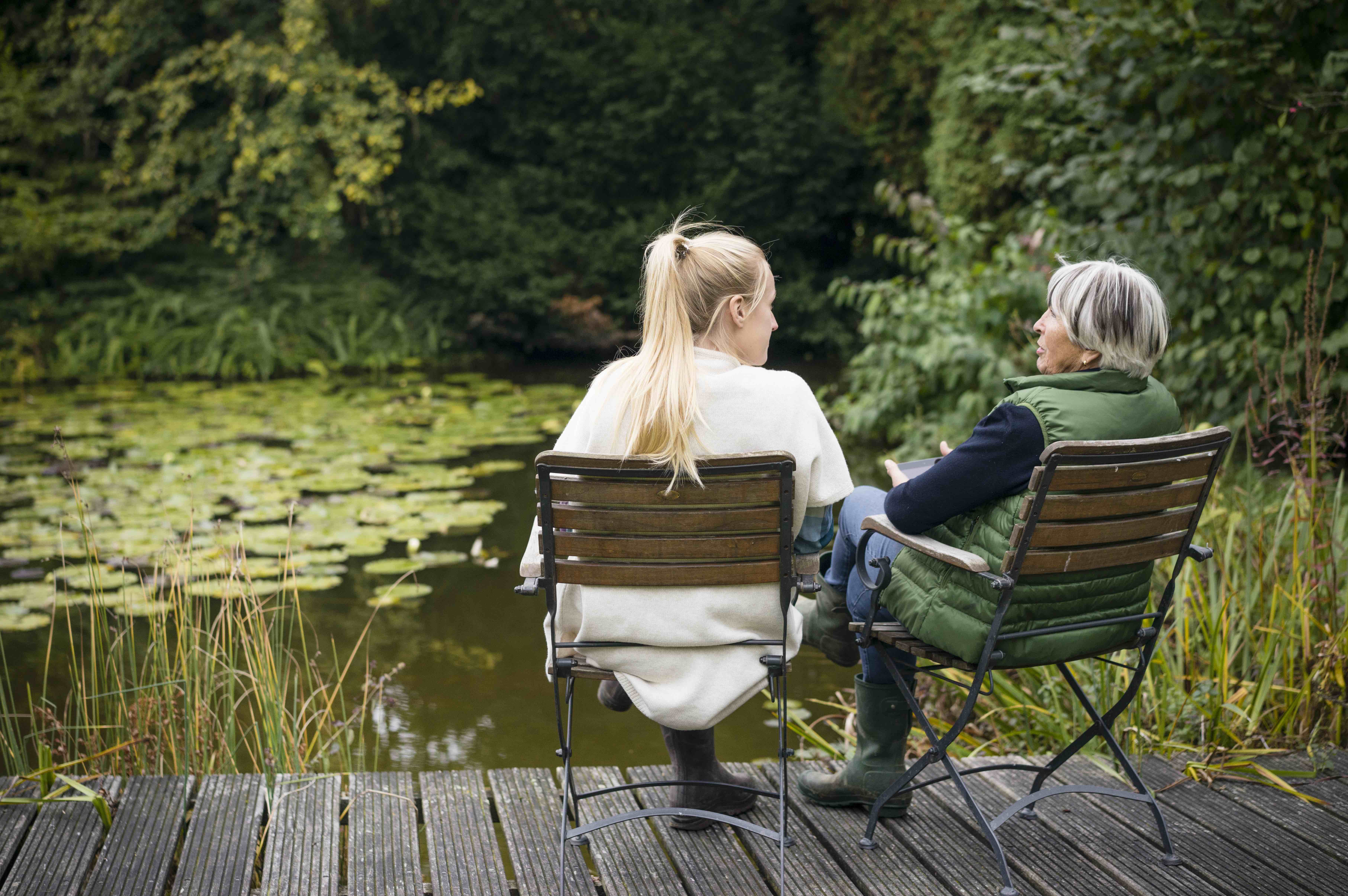
Health & Medicine
The language of living and dying

Interviews with terminally ill patients and their families highlight the importance and complexities of discussions about place of care and place of death
Published 19 June 2019
“My attitude is that [nursing homes] are waiting rooms. You go there to wait to die. Sometimes it takes a long time. Sometimes it doesn’t. But essentially it’s where you deposit people that you don’t want to care for at home or you can’t care for at home.”
That’s an observation from Jim*, a 66-year-old patient with lung cancer, who was to die less than three months after discussing his end-of-life wishes with us.

Like him, many terminally ill patients and their families we spoke to felt strongly about avoiding nursing homes at all costs. People there were described as “abandoned”, “drugged up” and even “locked up”.
Some even said they would rather die than go into a nursing home. However literally we take remarks like this, they illustrate the extremely poor reputation of these care settings.
It is important to realise that where we die matters. Just as our living environment influences our quality of life, so does our dying environment; affecting how we and our families experience death.

Health & Medicine
The language of living and dying
With increasing numbers of ageing and terminally ill patients, our healthcare systems are now under tremendous pressure.
Deaths in hospitals and nursing homes are on the rise and the new Victorian voluntary assisted dying legislation may further impact people’s place of death.
But have you ever told your family about where you want to be at the end of your life? If not, you are not alone. Many of us find it confronting to talk about death and dying, and so we postpone these discussions, until it’s too late.
In our research, recently published in the journal Palliative Medicine, we wanted to find out how people make decisions about where they want to be at the end of their life and how they approach these conversations.

So, we asked the only ones who would really know: terminally ill patients and their family caregivers. And there are key lessons that we can learn from these conversations.
There’s a difference between preferences for place of care and place of death.

Politics & Society
Navigating assisted dying in Victoria
Many patients want to receive care at home if they can, but they don’t necessarily want to die there. This is often chosen out of concern for the family, as described by Agnes*, an 83-year-old patient with pancreatic cancer:
“I don’t want to die at home here, because if I do it’ll haunt Michael [carer]. He doesn’t think it but I know from my own self that it’ll haunt him knowing that he’s seen me die at home. I think it’s better if I’m dying in the hospital. That would relate better to him, you know. That’s what we’ve decided... I wanna finish me days there.”
This distinction between place of care and place of death is meaningful for many.
But even researchers and medical professionals do not always clearly differentiate between these two questions and ask about preferences for place of care when reluctant to raise the topic of death.

However, this avoidance can have considerable consequences as it may lead to misinterpretations of people’s true preferences and the false assumption that almost all patients want to die at home.
End-of-life decision-making is characterised by uncertainty.

Politics & Society
Why we shouldn’t fear old age
Patients don’t know what symptoms they will develop, how much their carer can handle or how much time they have left. This uncertainty makes it extremely difficult to form clear and stable choices within a care system that often expects definite answers.
For example, Sarah*, a 65-year-old patient with metastatic breast cancer, describes how unfamiliar care settings are initially very frightening and that getting to know the staff and the ward helps her cope with this fear:
“I didn’t want to go there initially. I was scared of it, frightened of it. I thought, you know, palliative care [gasp]. Oh, no! I sort of got a one-way ticket in there, you know. But now I don’t feel like that at all. And that’s because of the staff and the way they are and the way my palliative care nurse treats me as well... I felt terrified of death and dying and the unknown.
“When this happens to you, everything stops. It’s like someone sliced your life down the middle and you’re not going to do any of the things you thought you’re going to do. And so with that comes fear of the life ending and wanting that life.”

This also illustrates that decision-making at the end of life is very emotional.
People make choices not only based on what they think about different care settings but also how they feel about them. But, this important emotional component may be avoided or not recognised in medical discussions between clinicians, patients and families.
There may also be disagreements between patients and their families about their preferences, as family members tend to favour formal care in institutional settings like hospitals or hospices more often than patients.

Health & Medicine
It’s a fact: Women get better with age
Carers explain that here they have instant access to medical support, but care is often provided by strangers in an unfamiliar setting with an unfamiliar routine.
This is a trade-off that needed to be considered. Talking about each other’s preferences is an essential first step to reconcile any differences and negotiate preferences with respect to each other’s needs.
But meaningful end-of-life discussions are not a one-off conversation.
They often require a continuous dialog between patients, families and healthcare professionals. Instead of just asking “Where do you want to be cared for and die?”, we should also ask “Why?”.
Deepening this conversation can help us to understand under which circumstances preferences exist, persist and change.

The end of life is an extremely emotional and challenging time but talking about each other’s wishes may help families to understand what matters most to them as they approach the final stage of their life.
And if you don’t ask, you might never know what they would have wanted. Sometimes all it needs is a conversation starter.
So, if you want to share your end-of-life wishes with your loved ones or are curious about theirs, why not use this article as a way to approach this topic.
It could be as easy as saying: “Hey, I read this Pursuit article today about end-of-life preferences, and that got me thinking…”
*Participants’ names have been changed to protect the privacy of patients and their families
Banner: Getty Images